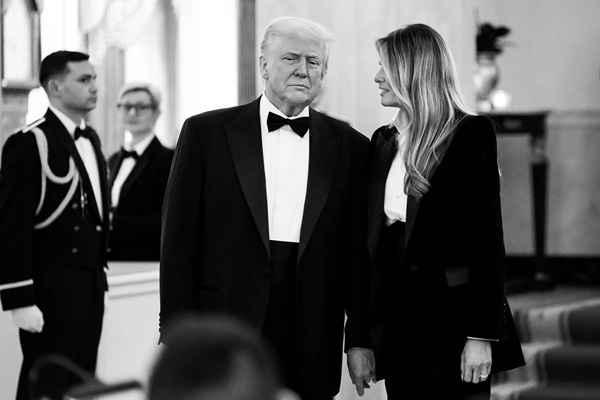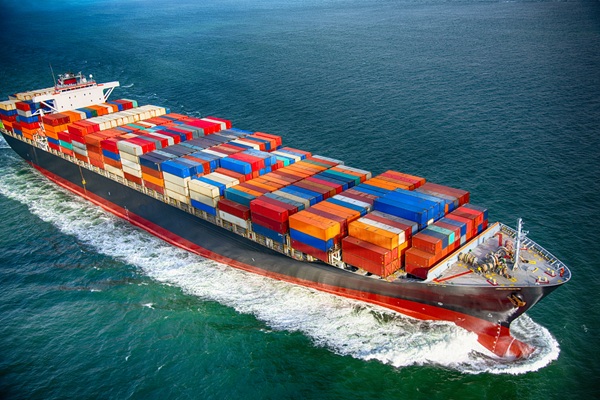.png)
April 3, 2025 at 3:32 AM IST
US President Donald Trump on Tuesday declared a sweeping national emergency aimed at reversing what he described as decades of economic sabotage through unfair trade practices. The executive order, issued under the rarely used International Emergency Economic Powers Act of 1977, will impose a 10% tariff on all imports into the United States, with higher duties to follow on goods from countries with which the US runs the largest trade deficits.
The move, which takes effect April 5, marks one of the most aggressive interventions in global commerce by any US president in modern times. Trump said the decision was necessary to defend national security, rebuild domestic manufacturing, and reclaim the country’s “economic sovereignty.”
A separate set of reciprocal tariffs will be enforced from April 9 on nations identified as having persistently benefited from non-reciprocal trade, currency manipulation, or policies that “hollowed out” American industry.
The White House said these steps were part of a broader effort to end what it called systemic discrimination against US exports. According to the fact sheet released by the White House, many of America’s trading partners impose value-added taxes on US goods at the border while exempting their own exports. These practices, the administration said, had contributed to a sharp erosion in industrial capacity, supply chain resilience, and national self-reliance—especially in defence-related sectors.
While tariffs had been a signature tool of Trump’s first term, this latest escalation is qualitatively different. Unlike earlier levies focused on specific sectors like steel or solar panels, the new tariffs apply across the board, targeting nearly all goods not already subject to Section 232 duties. Exceptions will be limited to critical inputs not produced domestically, including select pharmaceuticals, semiconductors, rare minerals, and certain energy imports.
Analysts say the move could significantly jolt trade flows, roil global markets, and test diplomatic ties. While Trump’s administration has often couched trade policy in the language of fairness and rebalancing, Tuesday’s order made clear that these actions were also intended as a direct response to the US’s persistent and growing goods trade deficit—which stood at over $1.1 trillion in 2024, according to Commerce Department data.
The fact sheet stated that existing laws and trade agreements had failed to deliver reciprocity. Countries that tax US exports but enjoy duty-free access to the American market would now be forced to the table or face rising penalties. “Free trade has not been fair trade,” the document noted, calling the emergency a decisive corrective to years of asymmetric globalisation.
Canada and Mexico, America’s neighbours and partners in the United States-Mexico-Canada Agreement, were given partial exemptions. USMCA-compliant goods will continue to enter tariff-free, but non-compliant ones—particularly those involving energy, potash, or other strategic commodities—will face duties of 10% to 25%. If ongoing emergencies declared over fentanyl and border security are lifted, a blanket 12% reciprocal tariff will apply to all non-compliant imports from these nations.
Trump’s order also includes a mechanism to scale the tariffs up or down. Countries that retaliate or fail to reform their policies may face steeper duties. Those that take what the administration deems “significant steps” to address non-reciprocal practices will be eligible for relief. The White House signalled that while it expected friction in the short term, it viewed the tariff regime as a tool of leverage—not a permanent fixture.
This is the second national emergency Trump has declared since returning to office in January. The first, focused on the southern border, allowed for the reallocation of funds and personnel to address illegal immigration and drug trafficking. Tuesday’s order similarly uses emergency powers to override normal trade frameworks and impose what the administration considers urgent and necessary defences.
Critics warn the strategy risks triggering retaliatory tariffs, inflationary pressures, and legal challenges at the World Trade Organization. Some industry groups have already expressed concern about rising input costs and potential supply chain disruptions. But the administration insists that any short-term pain will be offset by long-term gains in resilience, job creation, and American independence.
“America will not surrender its industrial future to foreign bureaucracies,” the fact sheet declared. “We will never again allow others to exploit our markets while denying us access to theirs.”
Whether trading partners will back down or escalate remains to be seen. For now, the message from Washington is unequivocal: the age of passive trade diplomacy is over.




